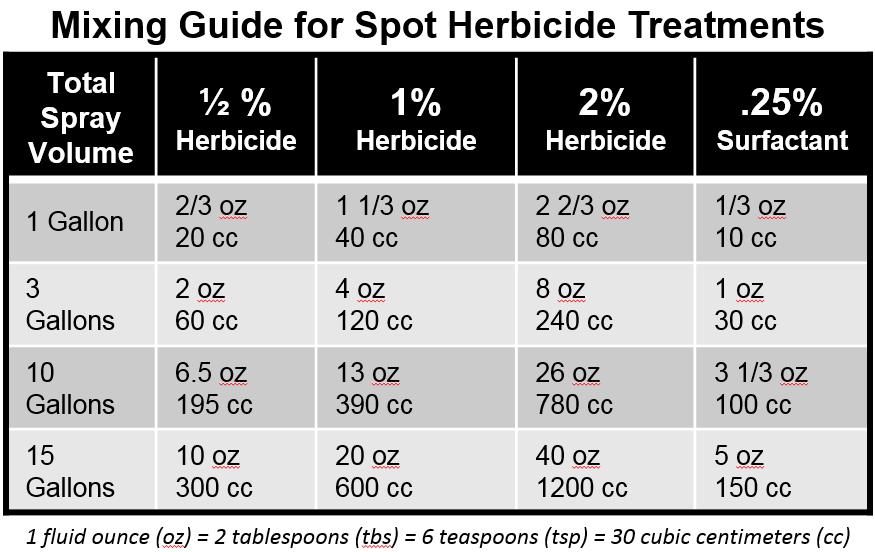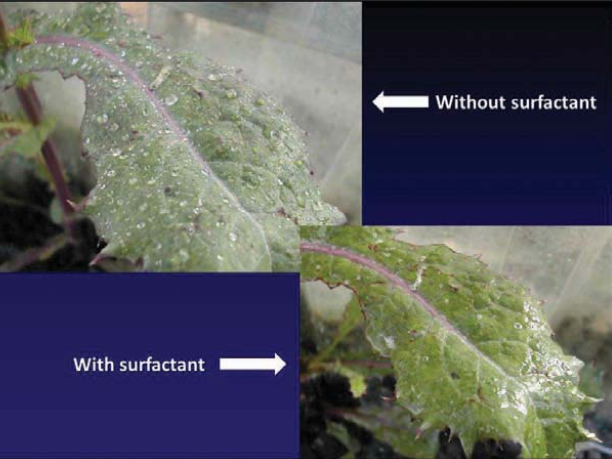
Source: Pasture Weed Control in Arkansas
Doug Mayo, Jackson County Extension Director & Dr. Jay Ferrell, UF/IFAS Extension Weed Specialist
From time to time people ask, “What is the cheapest way to control weeds in pastures?” A healthy, vigorous pasture grass will choke out most weeds that try to get established. Even so, the very best pasture managers have to deal with weeds of some sort because Florida’s climate provides an ideal habitat for weed establishment and growth. Typically weeds develop a stronghold in weak areas of pastures such as feeding zones, around water troughs, high traffic areas, and loafing areas around shade. Once weeds begin to establish, even in small areas, they start spreading and building a seed bank waiting for an opportunity to compete with forage grasses. There is a low cost method that can be used to control weeds early on before they spread called “spot treatment.”
Spot treatment of weeds can be as simple as using a broadcast sprayer that is turned on and off to only spray the parts of pastures with weed issues and not over clean areas. More commonly though, this phrase is used to refer to individual plant treatment. Depending on the weeds to be controlled and their stage of maturity, costs for a total pasture broadcast herbicide treatment can range from $5-24 per acre for the chemical alone. However, if you jump on a problem area early, individual plants can be controlled and the cost of herbicide will be significantly reduced because you only apply the chemical on the targeted weeds.
In general, spot treatment will require considerably more labor than a broadcast treatment. There is a trade-off, as a manager you have decide which resources are more precious, your time or your money. It really depends on the level of infestation as to which method is most efficient. If you jump on a weed problem early enough, spot treatment will be less expensive and not too overwhelming. Seldom does a single broadcast treatment remove weeds completely, so spot treatment can be be used as a follow up treatment to prevent infestations from reoccurring.
There are some key things to know before you get started with spot treatment. Just as with broadcast treatments, the first step is to identify the most problematic weeds to be controlled. Weed identification can be challenging, especially since people use different common names for the same weeds: spiny pigweed or careless weed, sida or teaweed or ironweed. Weed identification is something your County Extension Agent can assist with. Nobody can remember the names of all of the weeds in Florida, but the University of Florida has a network of specialists and a herbarium that can assist with positive plant identification. Once you know the specific weeds to be controlled, effective herbicides can be selected. Dr. Jay Ferrell and Dr. Brent Sellers have an annually updated weed control guide for pastures with a herbicide ratings chart for the more common weeds: Weed Management in Pastures and Rangeland. This is a great resource for herbicide selection, once you know which weeds you are targeting.
Most herbicide labels have very clear explanations for their use as broadcast treatments. Typically they even provide lists of common weeds and a recommended rate to apply per acre. Spot treatment recommendations on specific product labels vary considerably. If you are not treating acres at a time, the simplest method to use is a spray solution on a percentage basis. The mixing chart below provides a basic summary of how much herbicide and surfactant should be added per volume of water. There is a more complete chart available in: Chemical Weed and Brush Control on Rangeland, but you will have to convert to get the CC’s for the correct amounts.

Source: Texas A&M’s Chemical Weed and Brush Control on Rangeland
One technique that can be very helpful is instead of working with fractions of ounces, tablespoons, or teaspoons is to convert the recommended herbicide concentrate into cubic centimeters (CC). This is especially true for mixing small quantities of spray solution, because you can use plastic disposable syringes to get the precise amount of herbicide concentrate needed.
There are a number of options for the type of equipment to use for single plant or spot treatment. Certainly, one to two gallon pump-up sprayers are the cheapest options. The constant need to stop and pump, the limited capacity, and carrying the free swinging weight, however, gets old fast. A better option is a backpack sprayer, because they are much easier to carry and can be pumped as you walk to keep the pressure fairly stable. Three gallon backpack sprayers are ideal for most people, but larger units are available. Just remember that a five gallon sprayer completely filled will weigh more than 50 pounds and will be heavy and awkward to carry around pastures. Padded straps are also very important feature for these types of sprayers. A more convenient option is a 10-25 gallon electric sprayer that can be connected to the electrical system of a pickup truck, tractor, 4-wheeler, golf cart, or off-road utility vehicle. If you already own an agricultural sprayer for your tractor, the cheapest option may be to simply purchase a sprayer wand attachment made for your specific unit.
Whichever type of equipment you choose, beware of bargain sprayers. The plastic spray wands break and the seals on the tanks go bad over time. Instead, choose brands that offer replacement parts. Sprayer wands made of brass or metal cost more, but will hold up longer with regular use. Mail-order supply companies like Gempler’s carry a wide range of sprayers for spot treatment, and even carry the replacement parts if you don’t have a sprayer equipment dealer nearby. Like other farm equipment, you generally get what you pay for.
Once you have your equipment there are a few other things to keep in mind. Spray individual plants until they are wet and stop. Hosing plants down can actually reduce weed control. At high rates the active ingredients can burn the leaves to the point that it actually reduces herbicide uptake. The goal is to evenly cover the leaves with a light, fine spray or mist and move on. If you are spraying large brush or small trees, make sure you spray the entire canopy of the plant. Otherwise you may on only defoliate part of the plant and not get a complete kill.
Surfactants are just as important for spot treatment as with broadcast spraying. Dishwashing detergent, diesel fuel, alcohol or some other cocktail will not work like a commercial surfactant. Surfactants are made specifically to mix well with herbicides in the tank and help spray droplets dry in place on the leaf of the weeds. If the chemical rolls off the leaves onto the ground before it dries, it won’t be effective. Read the herbicide label and follow the instructions provided for that particular product. Most pasture herbicides recommend a 0.25% solution of a non-ionic surfactant. (See mixing chart above)

Source: Pasture Weed Control in Arkansas
Individual plant treatments are challenging, because weeds tend to be scattered and clumped in pastures. It is not efficient to walk or drive in straight lines, so you jump from plant to plant or clump to clump. Adding a blue or purple dye to your spray mix can really help to know where you have already sprayed. Even with the dye you are going to miss some plants, so be prepared for a follow up treatment a few weeks later to hit the weeds you missed. Don’t judge the results of your treatment too quickly. It is pretty likely that there will be surviving plants that were either completely missed or inadequately sprayed on the first attempt.
Another common mistake is mixing too much spray solution. Start off conservatively until you figure out how long it takes to spray three, five, or ten gallons, before mixing up a full tank. Most herbicides degrade over time in water. Start with a clean tank, spray out the mix completely, and clean the tank out again before storage. The sprayer seals and pumps will last a lot longer if they are stored clean and dry. Develop a routine to only mix what you need, and then clean out the tank when you are done.
Just as with any type of chemical application, you need to follow the safety instructions on the product label. With a spray wand you are much more likely to be exposed to spray drift. Most herbicide labels call for a minimum of long pants, long sleeves, and chemical resistant gloves. Hats and eye protection are always a good idea as well. Take steps to reduce exposure, and then wash up and put on clean clothes as soon after application as possible.
Like most every other operation on a farm or ranch, spot treatments take some practice to develop the system that fits your schedule and equipment. Investing in the right equipment will make this job easier. The ultimate goal of using the spot treatment approach is to prevent major weed infestations before they rob water and nutrients from forages in your pastures, and of course do it with as low a cost as possible.
- November 2025 Weather Summary & Winter Outlook - December 5, 2025
- Friday Feature: The History of Beekeeping - December 5, 2025
- Friday Feature:Malone Pecan Festival Tractorcade - November 21, 2025
